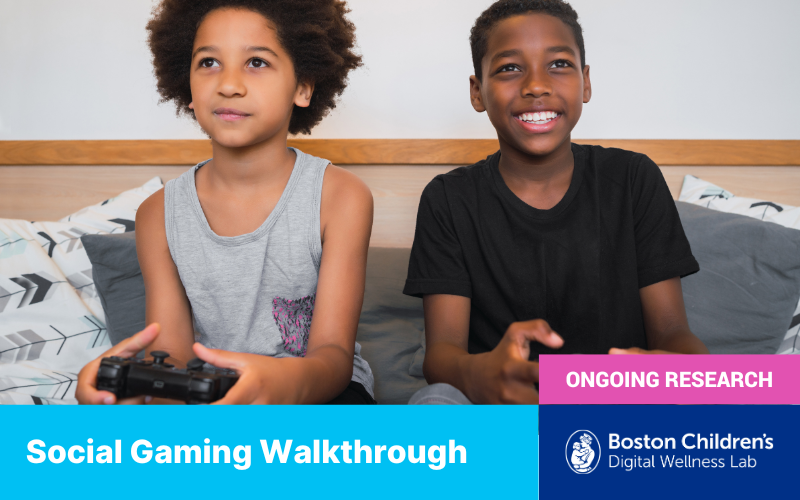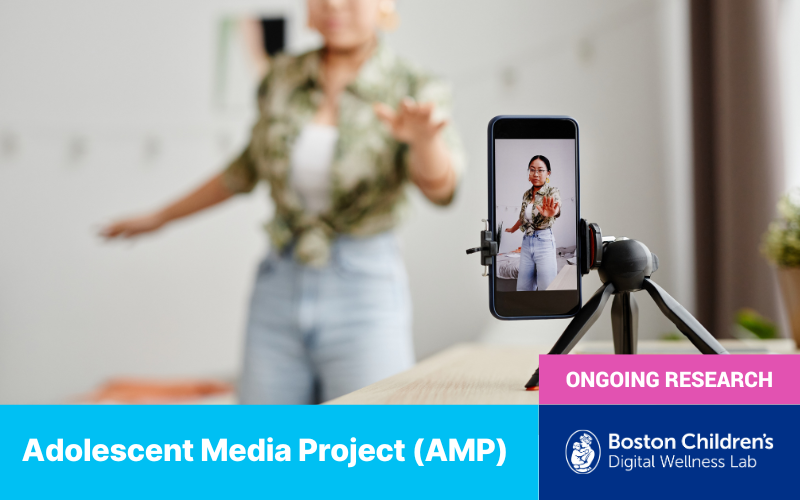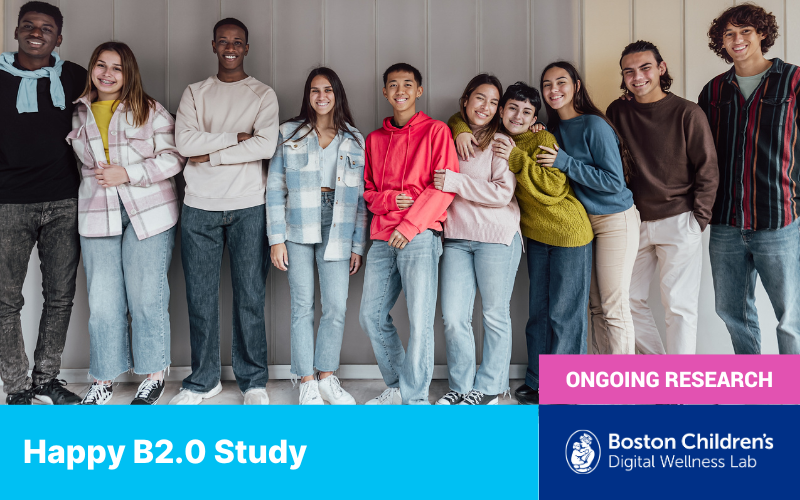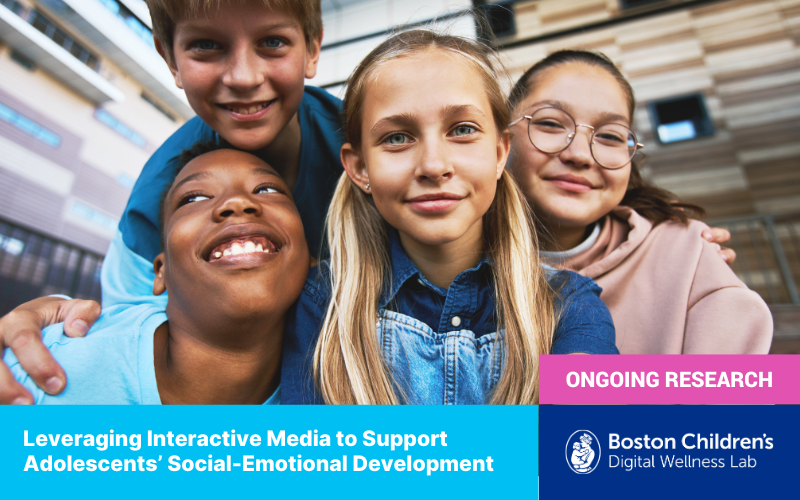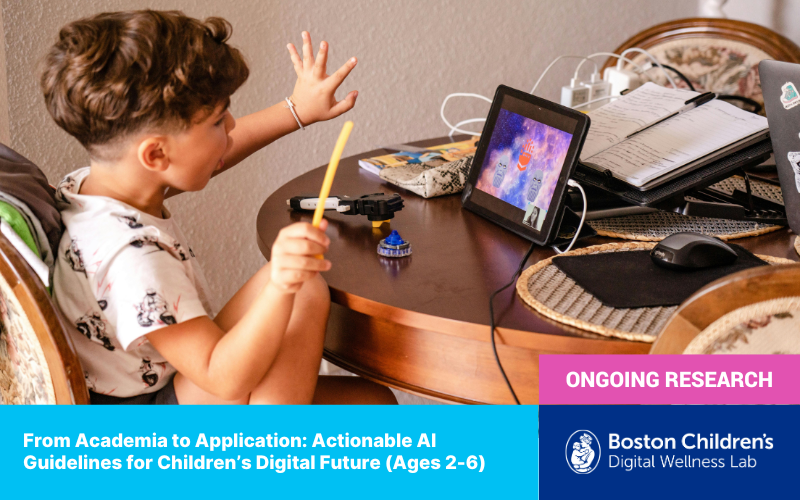Project Name
Social Gaming Walkthrough
Areas of Focus
Prosocial Development
Duration
3 years (2023-2025)
Collaborators
Faculty Leads
Additional Colleagues
- Dania Alsabeh, University of Michigan
- Amanda Baughan, PhD, University of Washington
- Chris (Yue) Fu, MA, University of Washington
- Sam Schwamm, MA, Digital Wellness Lab
- Nicole Powell, MSW, Digital Wellness Lab
- Elizabeth Hunt, MA, Digital Wellness Lab (former employee)
- Emily Izenman, BA, Digital Wellness Lab (former employee)
Overview
The Social Gaming Walkthrough (SGW) study focuses on the gameplay experiences, conceptualizations, emotional drivers, and decision-making processes of children and teens (ages 8-14) who play online multiplayer games such as Roblox, Minecraft, and Fortnite.
Objectives
To develop a deeper understanding of young people’s self-representation, social interactions, relationships, and decisions around recommended and/or monetized content in immersive, interactive online environments. This will ultimately guide both game designers and parents/caregivers in facilitating safer and healthier experiences for youth within these spaces.
Methodology
A diverse, nationwide group of 50 children and teenagers (ages 8-14) who played social online games at least weekly were recruited to participate in one-hour interviews over Zoom. These semi-structured interviews began with a general discussion of participants’ overall gameplay preferences and behaviors, followed by targeted questions on avatar customization, social features, content recommendations, in-game purchases, and player immersion/dissociation. For the second half of the session, research assistants observed participants playing a game of their choosing, prompting them to describe their preferences, decisions, and overall gameplay experiences. Interview recordings and transcripts were analyzed using qualitative methods (e.g., thematic analysis, grounded theory) to identify key takeaways for game designers, parents/caregivers, and other researchers.
Preliminary Findings
Deep Immersion in Gameplay
Young people become deeply absorbed in gameplay, often reporting that they lose track of time, temporarily ignore physical needs, and lose awareness of their surroundings. This level of dissociation was highest during high-pressure situations (e.g., combat, survival) and lower when players were traversing virtual environments or during game-initiated pauses (e.g., loading screens). Parents/caregivers and game designers can leverage these moments to create natural stopping points for disengaging from play (Baughan et al., 2024).
Avatars as Self-Expression
Children and teenagers use custom in-game characters (or “avatars”) to represent and express themselves, explore different identities, and fulfill social needs. Younger children were particularly likely to experiment with different body types, hairstyles, clothing, and accessories, often representing an idealized version of themselves that they saw as more mature or “cool”. Game designers should provide players with diverse avatar customization options to support children’s self-expression and identity formation (Fue et al., 2025).
The Influence of Peers and Media
Young people’s avatar designs were influenced by their peers as well as cultural and commercial factors including television and movie characters as well as social media influencers. Parents/caregivers can discuss these external pressures with their children, such as the stigma associated with free “default” or “newbie” skins, to lessen the appeal of desirable but expensive virtual items; game designers could provide players with free or inexpensive customization tools that encourage creativity rather than overconsumption (Fu et al., 2025).
Publications
Amanda Baughan, Yue Fu, Emily Izenman, Samuel Schwamm, Dania Alsabeh, Nicole Powell, Elizabeth Hunt, Michael Rich, David Bickham, Jenny Radesky, and Alexis Hiniker. 2024. Investigating Attention and Normative Dissociation in Children’s Social Video Games. In Proceedings of the 23rd Annual ACM Interaction Design and Children Conference (IDC ’24). Association for Computing Machinery, New York, NY, USA, 30–43. https://doi.org/10.1145/3628516.3655808
Yue Fu, Samuel Schwamm, Amanda Baughan, Nicole Powell, Zoe Kronberg, Alicia Owens, Emily Izenman, Dania Alsabeh, Elizabeth Hunt, Michael Rich, David Bickham, Jenny Radesky, and Alexis Hiniker. 2025. Understanding Children’s Avatar Making in Social Online Games [manuscript accepted for presentation]. In CHI Conference on Human Factors in Computing Systems (CHI ’25), April 26-May 1, 2025, Yokohama, Japan. ACM, New York, NY, USA, 16 pages. https://dl.acm.org/doi/10.1145/3706598.3713262
For more information about this study, please contact dwl@childrens.harvard.edu.








